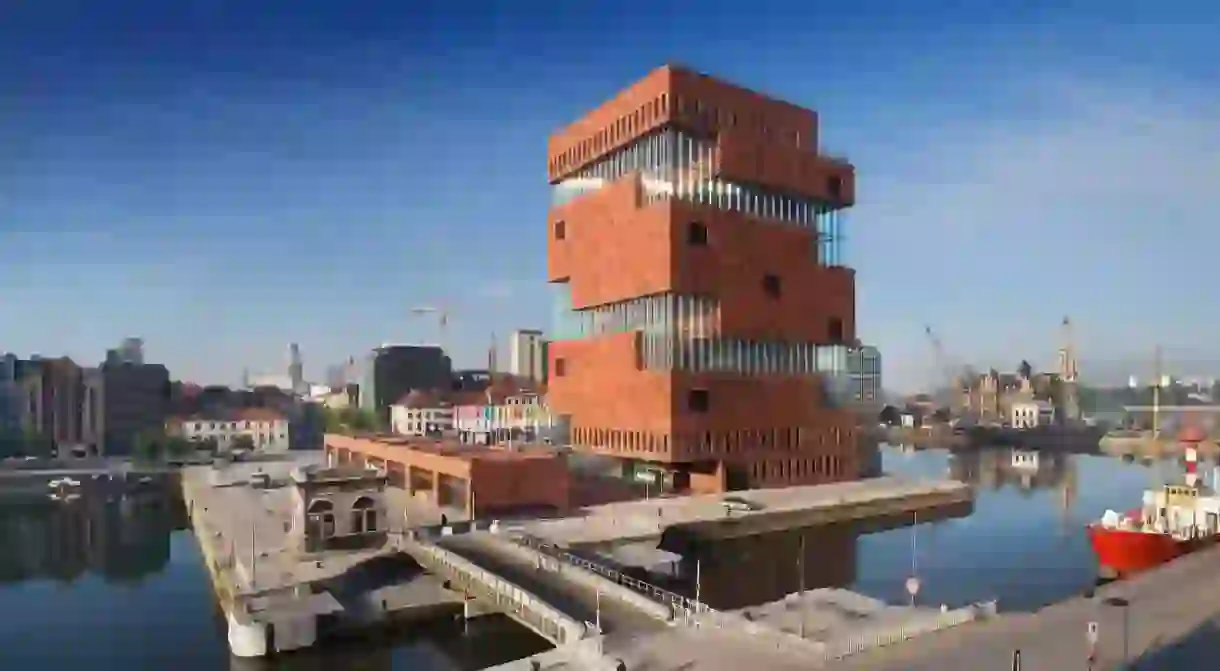A Brief History Of The MAS, Antwerp

Ask any Antwerpenaar what’s prompted ‘t Eilandje’s transformation from a scruffy dockside neighborhood to a revived hub of cool and they’ll point to the lego-like structure rising from the water. In its five-year lifespan, the imposing MAS, a museum telling the story of Antwerp’s crucial port history, has become a massive draw.
The MAS, the ‘Museum aan de Stroom’ – or ‘Museum by the Stream’ – is a 60-meter-high, red sandstone giant that towers over harbor district ‘t Eilandje (the little island). It has been part of the Antwerp skyline since 2011, which makes the museum, in human years, a preschooler. It was Dutch architectural firm Neutelings Riedijk that came up with the design: ten enormous stone containers stacked atop each other and connected by large strokes of undulating glass. In other words, its windows are waves. The whole construction is a dedication to the city’s relationship to water, after all, an explanation of how, why, and when Antwerp became the second biggest port in all of Europe.

The love affair is told via a rotating cast of 500,000 maritime objects that are spread over five different floors. Antwerp’s identity as a port city – which it has the invaluable river Schelde to thank for – is explored in four themes that range from the hunt for prestige in Displays of Power to the influence that constant exotic exchanges had on local cuisine in Antwerp à la carte. In between themed levels, there’s the opportunity to gaze through the wavy glass at the Antwerp skyline, with a two-star restaurant and a 360-degree rooftop panorama when you make it to the top of the structure. Many an afternoon will also see the ‘MAS Boulevard’ – these halls that can be accessed for free anytime – full of students and artists trying their hand at sketching the Antwerp skyline, perhaps in a last attempt to capture ‘t Eilandje mid-transformation.
Part of the MAS’ origin story will always be how it was the catalyst for an entire area’s rejuvenation. When plans for a port museum first surfaced in 1998, the location was an easy pick. Before the rundown warehouse that was there at the end of the 20th century, the Hanzeplaats boasted the ‘Hanzehuis,’ or ‘Oosterhuis’, a monumental 16th-century merchant complex that burned down in the late 19th century. Now, the MAS has again made this spot on the docks a buzzing hub, attracting artistic projects and hip coffee houses to the neighborhood like flies.













